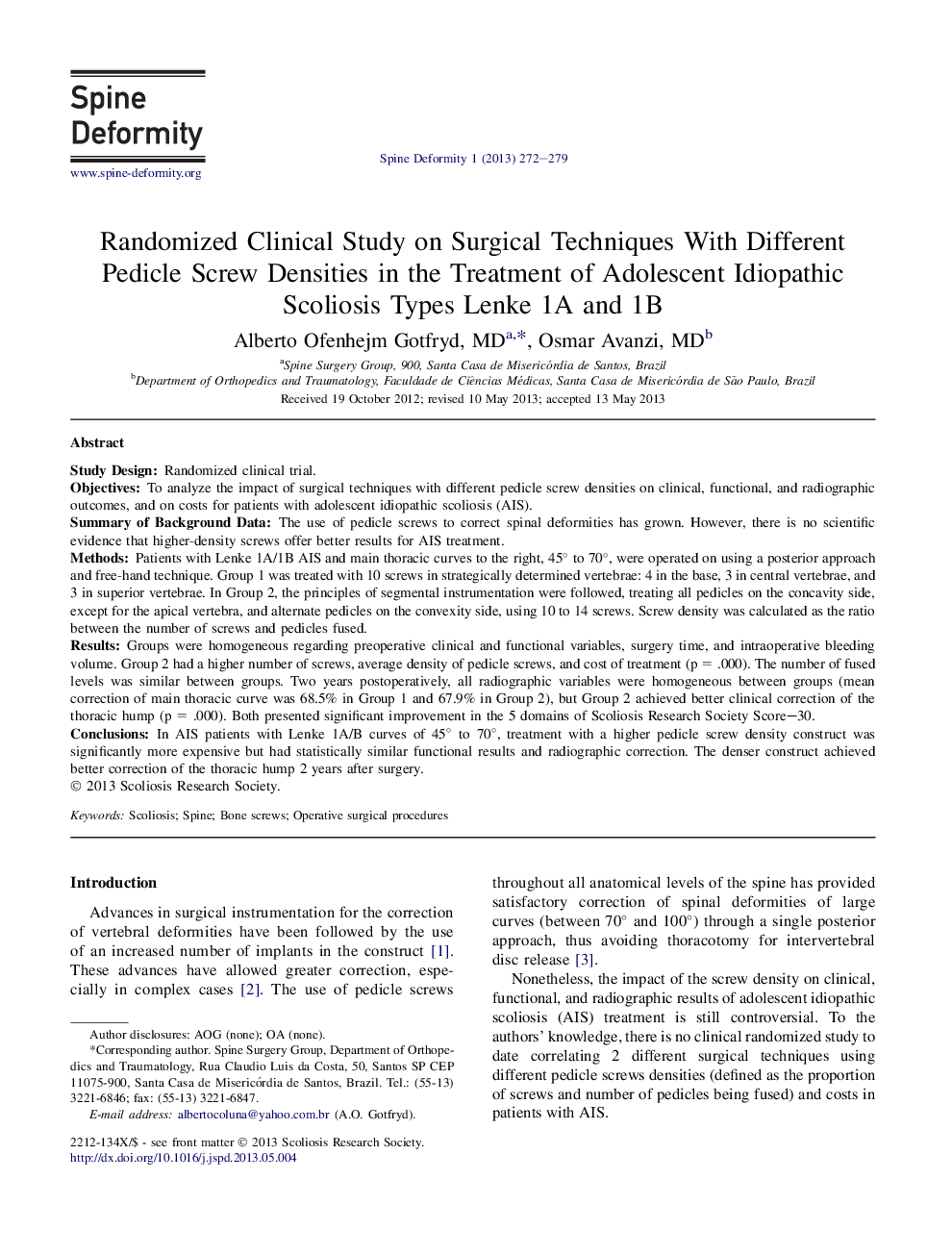| کد مقاله | کد نشریه | سال انتشار | مقاله انگلیسی | نسخه تمام متن |
|---|---|---|---|---|
| 4095689 | 1268544 | 2013 | 8 صفحه PDF | دانلود رایگان |

Study DesignRandomized clinical trial.ObjectivesTo analyze the impact of surgical techniques with different pedicle screw densities on clinical, functional, and radiographic outcomes, and on costs for patients with adolescent idiopathic scoliosis (AIS).Summary of Background DataThe use of pedicle screws to correct spinal deformities has grown. However, there is no scientific evidence that higher-density screws offer better results for AIS treatment.MethodsPatients with Lenke 1A/1B AIS and main thoracic curves to the right, 45° to 70°, were operated on using a posterior approach and free-hand technique. Group 1 was treated with 10 screws in strategically determined vertebrae: 4 in the base, 3 in central vertebrae, and 3 in superior vertebrae. In Group 2, the principles of segmental instrumentation were followed, treating all pedicles on the concavity side, except for the apical vertebra, and alternate pedicles on the convexity side, using 10 to 14 screws. Screw density was calculated as the ratio between the number of screws and pedicles fused.ResultsGroups were homogeneous regarding preoperative clinical and functional variables, surgery time, and intraoperative bleeding volume. Group 2 had a higher number of screws, average density of pedicle screws, and cost of treatment (p = .000). The number of fused levels was similar between groups. Two years postoperatively, all radiographic variables were homogeneous between groups (mean correction of main thoracic curve was 68.5% in Group 1 and 67.9% in Group 2), but Group 2 achieved better clinical correction of the thoracic hump (p = .000). Both presented significant improvement in the 5 domains of Scoliosis Research Society Score–30.ConclusionsIn AIS patients with Lenke 1A/B curves of 45° to 70°, treatment with a higher pedicle screw density construct was significantly more expensive but had statistically similar functional results and radiographic correction. The denser construct achieved better correction of the thoracic hump 2 years after surgery.
Journal: Spine Deformity - Volume 1, Issue 4, July 2013, Pages 272–279